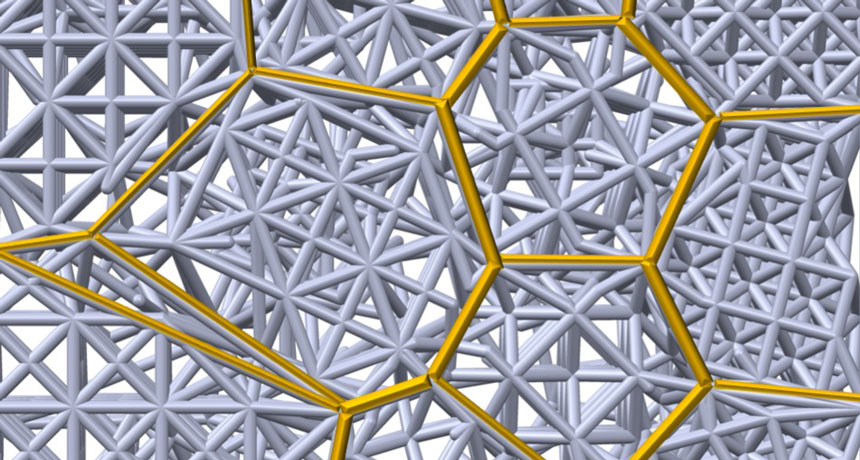Being messy on the inside keeps metamaterials from folding under stress
A disordered design keeps the whole material from collapsing under heavy loads

DAMAGE CONTROL Metamaterials with internal lattices containing regions with different sizes, types or orientations of crystal structure (divvied up by yellow lines in the illustration above) could be more durable than materials with neat and tidy designs.
M. Pham et al/Nature 2019







